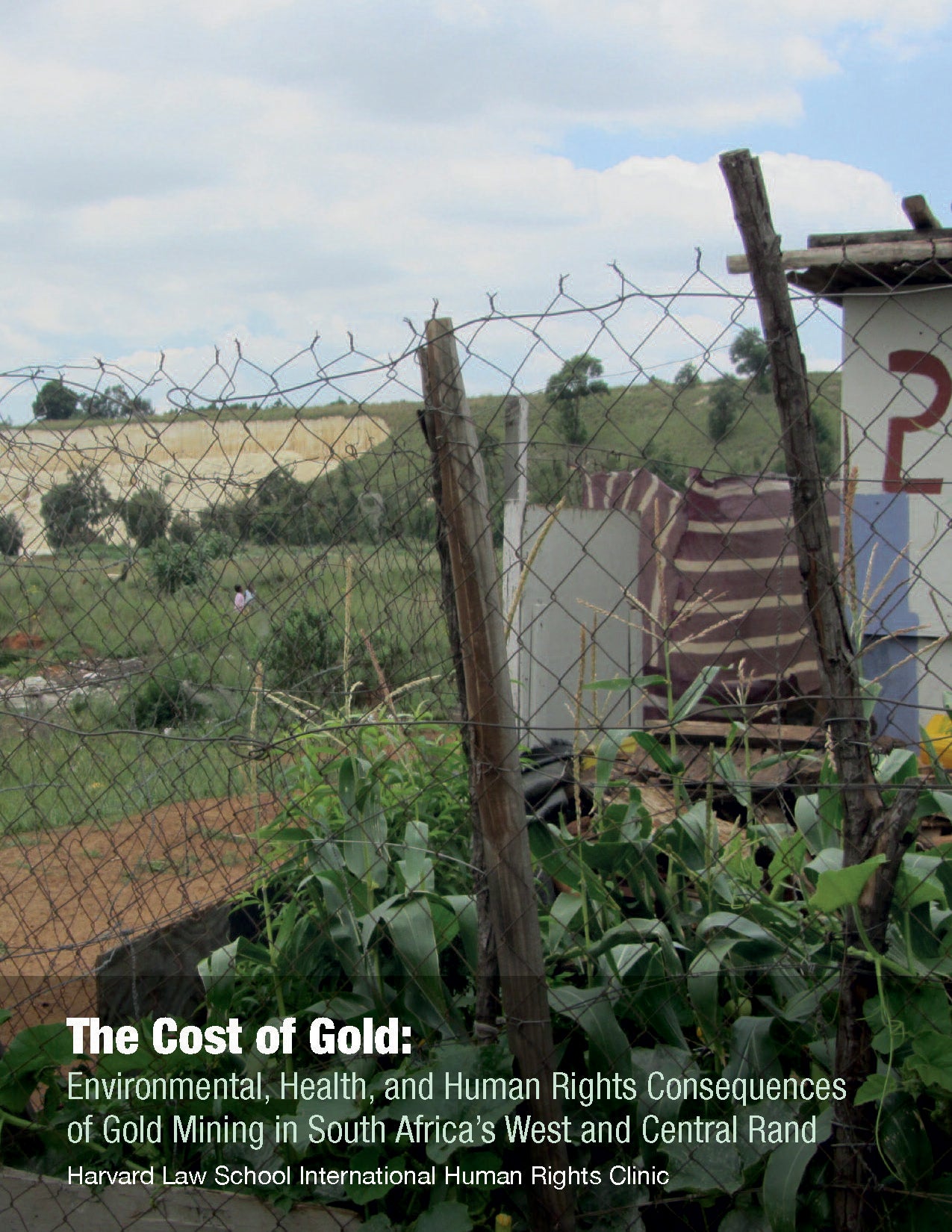South Africa has failed to meet its human rights obligations to address the environmental and health effects of gold mining in and around Johannesburg, the Harvard Law School International Human Rights Clinic (IHRC) said in a recently released report.
The 113-page report, The Cost of Gold, documents the threats posed by water, air, and soil pollution from mining in the West and Central Rand. Acid mine drainage has contaminated water bodies that residents use to irrigate crops, water livestock, wash clothes, and swim. Dust from mine waste dumps has blanketed communities. The government has allowed homes to be built near and sometimes on those toxic and radioactive dumps.
Examining the situation through a human rights lens, the report finds that South Africa has not fully complied with constitutional or international law. The government has not only inadequately mitigated the harm from abandoned and active mines, but it has also offered scant warnings of the risks, performed few scientific studies about the health effects, and rarely engaged with residents on mining matters.
“Gold mining has both endangered and disempowered the people of the West and Central Rand,” said Bonnie Docherty, senior clinical instructor at IHRC and the report’s lead author. “Despite some signs of progress, the government’s response to the crisis has been insufficient and unacceptably slow.”
The report is based on three research trips to the region and more than 200 interviews with community members, government officials, industry representatives, civil society advocates, and scientific and legal experts. It provides an in-depth look at gold mining’s adverse impacts and examines the shortcomings of the government’s reaction.
For example, although acid mine drainage reached the surface of the West Rand in 2002, the government waited 10 years before establishing a plant that could stem its flow. In addition, the government has not ensured the implementation of dust control measures and has left industry to determine how to remove the waste dumps dominating the landscape.
The Cost of Gold calls on South Africa to develop a coordinated and comprehensive program that deals with the range of problems associated with gold mining in the region. While industry and communities have a significant role to play, the report focuses on the responsibility of the government, which is legally obliged to promote human rights.
The government has taken some positive steps to deal the situation in the West and Central Rand. This year, it pledged to improve levels of water treatment by 2020. In 2011, it relocated residents of the Tudor Shaft informal settlement living directly on top of a tailings dam. The government along with industry has also made efforts to increase engagement with communities.
Nevertheless, The Cost of Gold finds that the government’s delayed response and piecemeal approach falls short of South Africa’s duties under human rights law. As a result, the impacts of mining continue to infringe on residents’ rights to health, water, and a healthy environment, as well as rights to receive information and participate in decision making.
“The government should act immediately to address the ongoing threats from gold mining, and it should develop a more complete solution to prevent future harm,” Docherty said. “Only then will South Africa live up to the human rights commitments it made when apartheid ended.”
